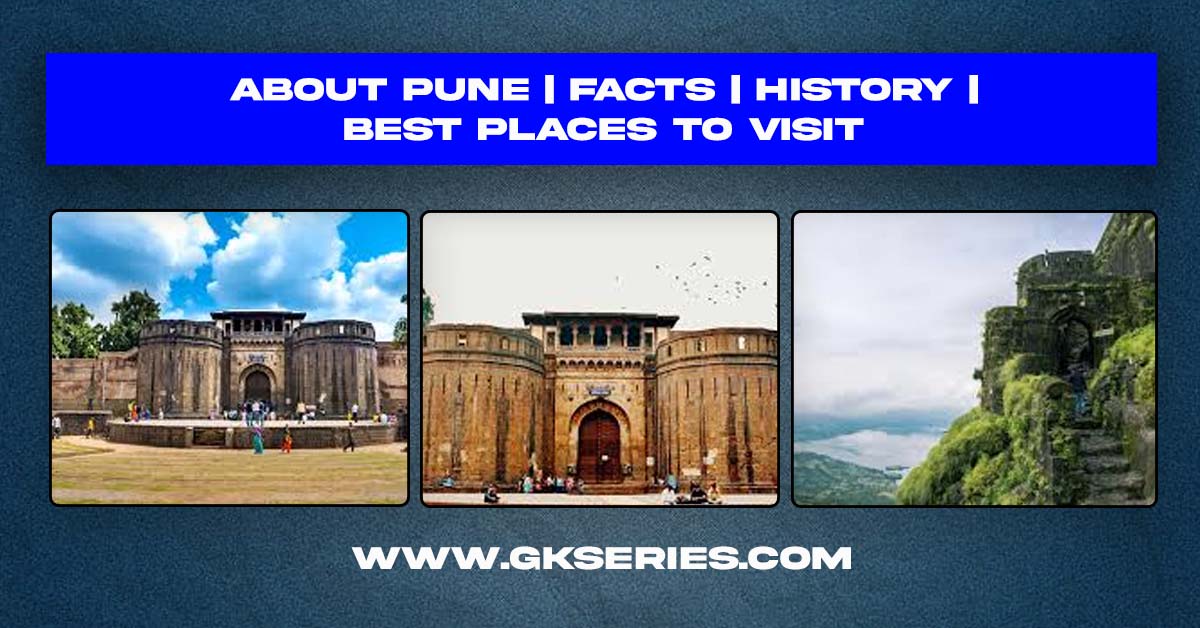
In this article, we provide comprehensive information about the geography, history, population, and top tourist destinations of Pune. Pune, often referred to as the “Oxford of the East,” is a bustling city in the western state of Maharashtra, India. Known for its rich history, vibrant culture, and thriving educational and IT sectors, Pune offers a perfect blend of traditional and modern lifestyles.
| About: | Pune, previously spelled in English as Poona (the official name until 1978), is a city in the state of Maharashtra in the Deccan plateau in Western India. It is the administrative headquarters of the Pune district, and of Pune division. Pune is one of the largest IT hubs in India. It is also one of the most important automobile and manufacturing hubs of India. Pune is often referred to as the “Oxford of the East” because of its educational institutions. It has been ranked “the most liveable city in India” several times. Pune has been ruled by various dynasties throughout its history, including the Rashtrakuta dynasty, the Ahmadnagar Sultanate, the Mughals, and the Adil Shahi dynasty. In the 18th century, it became part of the Maratha Empire and served as the seat of the Peshwas, who were the prime ministers of the empire. The British East India Company took control of Pune during the Third Anglo-Maratha War, and the city was granted municipal status in 1858, marking the beginning of Crown rule. This period saw the establishment of many historical landmarks, such as Shaniwarwada, Shinde Chhatri, and Vishrambaug Wada, which still stand today. The city is dotted with historical sites from various eras. Pune has historically been a major cultural centre, with important figures like Dnyaneshwar, Shivaji, Tukaram, Baji Rao I, Balaji Baji Rao, Madhavrao I, Nana Fadnavis, Mahadev Govind Ranade, Gopal Krishna Gokhale, Mahatma Jyotirao Phule, Savitribai Phule, Gopal Ganesh Agarkar, Tarabai Shinde, Dhondo Keshav Karve, and Pandita Ramabai doing their life’s work in Pune City or in an area that falls in Pune Metropolitan Region. Pune was a major centre of resistance to British Raj, with people like Gopal Krishna Gokhale, Bal Gangadhar Tilak playing leading roles in struggle for Indian independence in their times. |
| Geography: | Pune district is situated between 17 degrees 54′ and 10 degrees 24′ North latitude and 73 degrees 19′ and 75 degrees 10′ East longitude. It covers a geographical area of 15,642 square kilometers. The district is bordered by Ahmadnagar district to the northeast, Solapur district to the southeast, Satara district to the south, Raigad district to the west, and Thane district to the northwest. As the second largest district in the state, it accounts for 5.10% of the total geographical area of Maharashtra. The landscape of Pune district is triangularly distributed in western Maharashtra, lying at the foothills of the Sahyadri Mountains, and is divided into three regions: “Ghatmatha,” “Maval,” and “Desh.” Being part of the tropical monsoon zone, Pune district experiences significant seasonal variations in both temperature and rainfall. The climate in the western region is cool, while the eastern part tends to be hot and dry. |
| Country : | India |
| State: | Maharashtra |
| District: | Pune district |
| Language: | Marathi |
| Population: | The current estimate population of Pune city in 2024 is 4,436,000 , while Pune metro population is estimated at 7,184,000 . |
| Literacy rate: | The literacy rate in Pune is 86%, with a higher literacy rate of 90% for men and 81% for women. |
| Major Attractions to Visit: | Shaniwar Wada Aga Khan Palace Sinhagad Fort Dagdusheth Halwai Ganpati Temple Pataleshwar Cave Temple Osho Ashram (Koregaon Park) Parvati Hill and Temple Raja Dinkar Kelkar Museum Pune Okayama Friendship Garden (Japanese Garden) Pashan Lake Saras Baug Rajiv Gandhi Zoological Park (Katraj Zoo) National War Museum Mulshi Dam Khadakwasla Dam Pune University Campus Chaturshringi Temple Vetal Tekdi (Vetal Hill) Empress Garden Baner Pashan Biodiversity Park |





